On the Go Snacking
By Laura Slatalla, Recent ASU Nutrition Student
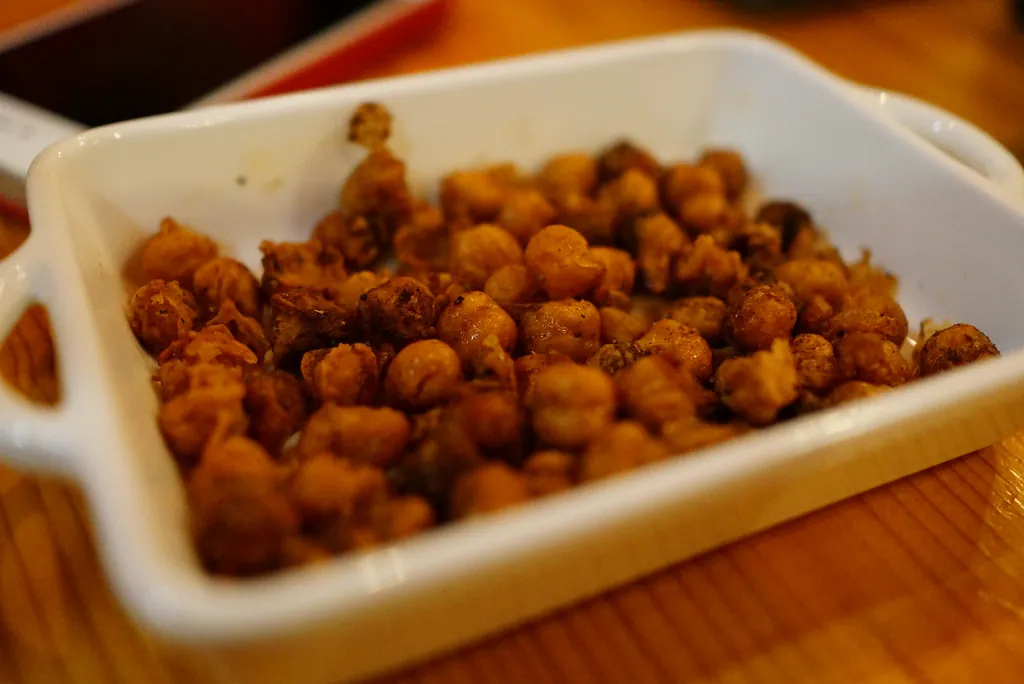
Are you lacking in quick and easy snack ideas? Healthy snacks like yogurt and hummus aren’t easy to eat while on the run, but having something handy while doing errands or going to class will keep you from stopping at a vending machine or fast food joint. Take a look at these convenient snack ideas for when you’re on the go.
Trail Mix
Design your own trail mix tailored to your likes. Start with some nuts like peanuts or almonds. Add seeds, dried fruit or berries, or some pretzels or crackers. The mix can be personalized and have the perfect ratio for you specifically. Portion it out into bags or reusable plastic containers and keep it in your purse.
Kale Chips
Craving something crunchy? Kale chips will satisfy without all the fat and calories that come along with your average potato chip. They are oven baked with a little olive oil, salt, and pepper to taste. Check out Fill Your Plate for the recipe.
Stuffed Pita
Pitas can be stuffed with veggies like spinach and bell peppers, turkey or chicken, and cheese. They require a little prep, but once they’re made and stored in the fridge, you can just grab one before you leave. They’re filling and won’t be messy if you need to eat them in the car. Everything stays contained in the pita.
Whole Fruit
I avoid fruits that need to be peeled or cut- like oranges or kiwis, but apples, pears, and grapes are all tasty options. Hardier fruit won’t bruise as easily in a bag, but harder containers can be used for berries and softer fruits.
Roasted Chickpeas
These beans make a crunchy snack that’s high in fiber. They’re rinsed, tossed in olive oil, seasoned, and baked at 450 degrees for a half hour.
Sliced Vegetables
Raw vegetables can be eaten as finger foods. Go with carrots, sliced bell peppers, or celery. Snacking is an awesome way to up your vegetable intake.
Have You Loved on Your Legumes Lately?
By Laura Slatalla, Recent ASU Nutrition Student
Legumes are seeds or fruit of plants in the Fabaceae family. Common legumes are beans, lentils, and peas. Not only are they cheap and filling, but they contain fiber, protein, and vitamins, and antioxidants!
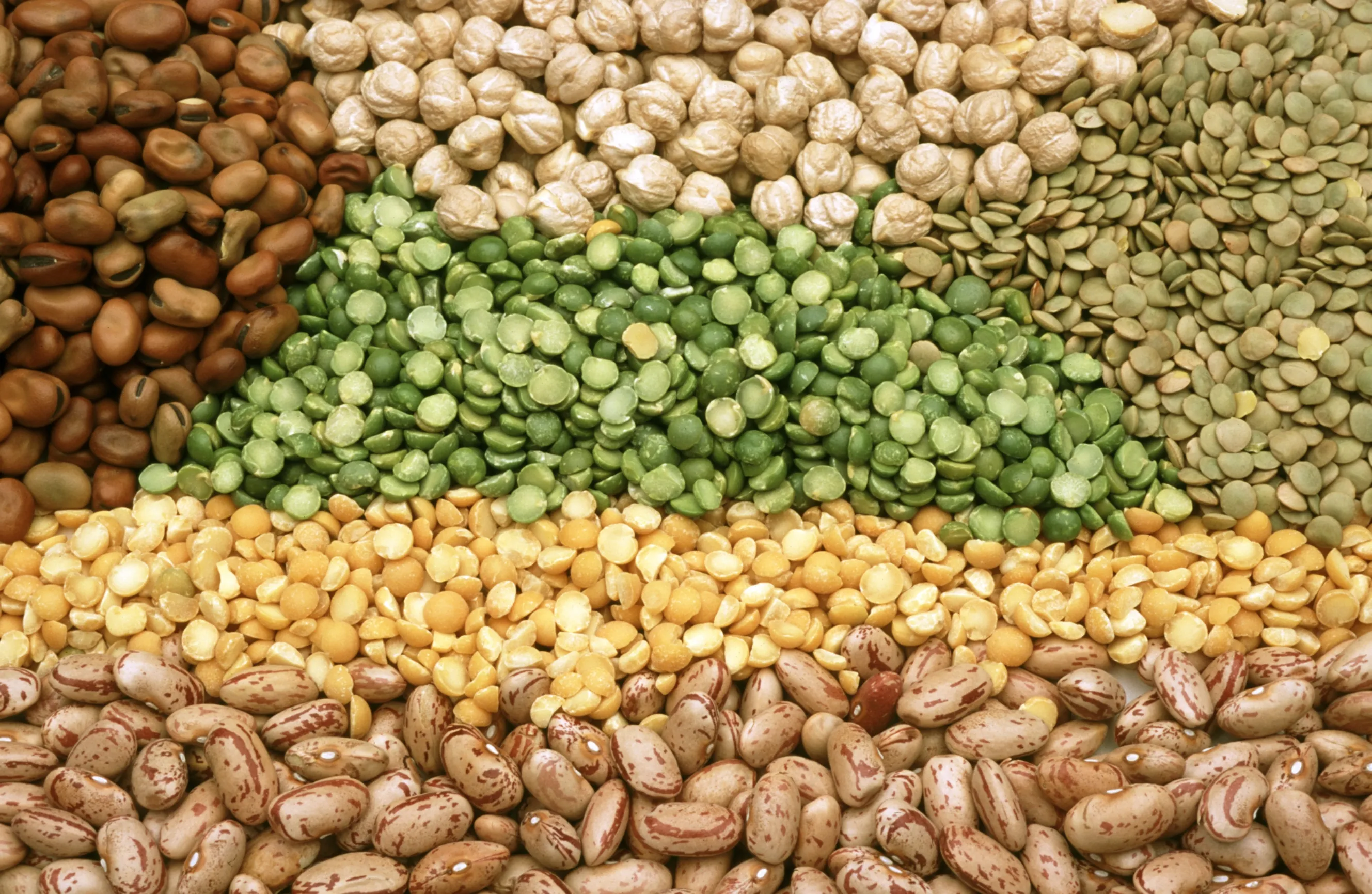
The high amount of soluble fiber in legumes can aid in digestive health, which lowers risk of colon cancer, and it’s also good for the heart. It binds to cholesterol, preventing it from being absorbed and lowering total cholesterol levels. High LDL cholesterol is a risk factor for heart disease. Lowering cholesterol by eating more legumes can reduce blood pressure because there is less build up along the arteries. They also have folate and magnesium, which reduce risk for heart disease. Overall legumes are a heart-healthy food!
Carbohydrates have a glycemic index, which measures how quickly they are absorbed and cause a spike in blood sugar. Legumes are a complex carbohydrate and have a low glycemic index, so they can help reduce big spikes in blood sugar and reduce the risk of type 2 diabetes. The slow absorption and fiber make you feel full longer and fill you up, so when consuming a meal with legumes, less total calories are eaten. This makes them a great weapon for weight loss and management!
Sometimes legumes are called the vegetarian meat because they’re high in protein and iron. They make a great alternative to meat. They have fewer calories and fat and absorb the flavors of spices and other foods that they’re paired with.
Adding legumes can be a little scary, but they’re versatile and easy once you get the hang of it! Here are a few tips on cooking with legumes:
- Soak your legumes. This softens them up, making them cook faster, cleans them, and prevents some of the gas associated with eating them.
- Split peas and lentils do not need to be soaked.
- Add salt, vinegar, or tomatoes near the end of the cooking process. Otherwise they can get tough and take longer to cook.
- They can be refrigerated for up to 5 days or frozen.
- Try adding legumes to pastas and salads to get started.
It’s clear that legumes offer many health benefits! If you’re still curious about legumes check out Fill Your Plate! Or if you’re looking for more informative and interesting articles you can find them on the Fill Your Plate Blog.
Are Carbohydrates Linked to Cancer In Any Way?
By Jessica Bombace, ASU Nutrition Student
Cancer has affected all of us either indirectly or directly sometime in our lives. I always wondered if any food that we ate had an impact on the risks of getting cancer. “You are what you eat!”, is a saying that is always in the back of my mind. This is what sparked the idea to research and see if carbohydrates have an affect on getting cancer.
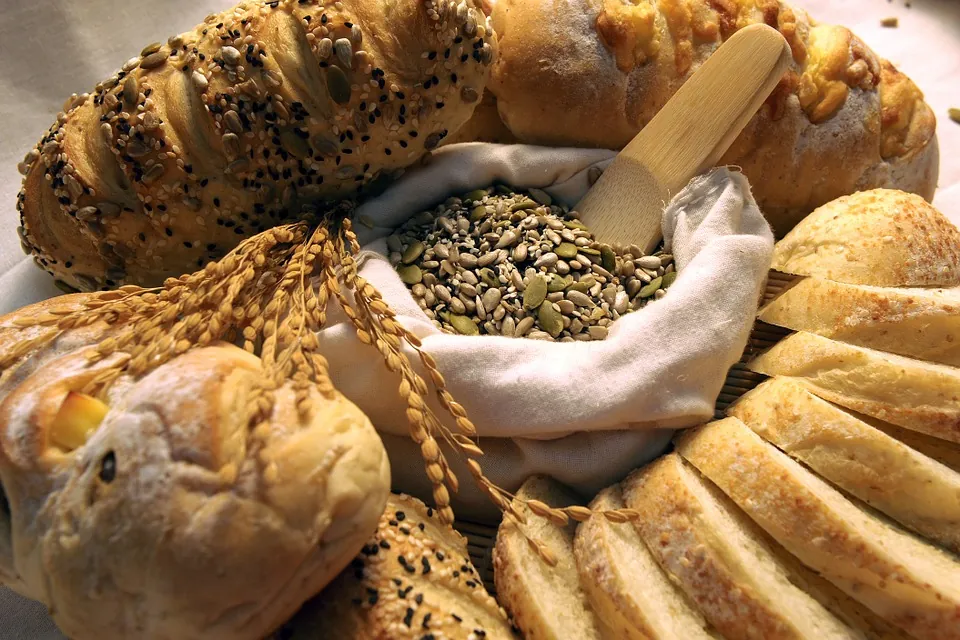
The first study that I came across was provided by an article called “Cancer: Low Carb, low tumor growth. Here is a break down of the study
- Study conducted in Vancouver, Canada
- Study was done by Gerald Krystal and colleagues
- Mice were the subjects
- Low carb, high-protein diet showed slower tumor growth (1)
- Study was compared to a typical high- carb western diet (1)
- It was also compared to the growth of both human and mouse tumors in mice (1)
- Mice were fed diets comprising of 8%, 10%, 15%, or 55% carbohydrates (1)
- For the 10% and 15% carbohydrate diet it resulted in mice having slower tumor growth compared to the other mice who ate a high-carbohydrate diet (1)
So, of course this study doesn’t exactly prove that carbohydrates are the reason for cancer, but what it does show is a significant link to how a low-carbohydrate diet may help in the long run in slowing down a tumor if one already exists.
The next study focuses more on a particular cancer and it’s link to carbohydrates and breast cancer. Here is a break down of the information and details of the findings in this study:
- Study was done by Cancer Epidemiology, Biomarkers & Prevention
- Mexican researchers did a study by comparing diets
- The subjects in this study were done on human subjects (women)
- What was compared was self-reported diets of 475 breast cancer patients to the diets that 1,391 women (healthy, no cancer). (2)
- All the women are all around the same age, weight and other comparing factors (2)
- The results from this study showed that the healthy women who had the diet of consuming the highest amount of carbs had a higher risk of developing breast cancer than the women who did not have a high carb diet. (2)
- In many cultures around the world, carbohydrates are known to be the “backbone” so of speak (2)
- In this article it makes sure to provide two important points about carbs and cancer. Here are the two points verbatim
- “You cannot, on the basis of this or any single study, draw conclusions about carbohydrates and their effect on cancer risk. To warrant dietary change, scientific findings must be reviewed, considered against the bulk of previous evidence and replicated by different researchers using researchers using studies of different types.” (2)
- “ You cannot make generalizations about “carb” because the category contains an enormous variety of foods that have vastly different nutritional profiles and vastly different effects on the body.” (2)
So getting back to the study itself, the Cancer, Epidemiology, Biomarkers and Prevention study reports that the carbs that were in this study were mostly highly processed carbs. Some of these highly processed foods were chips, corn tortillas, white bread and soft drinks. Another interesting point that they came across was that how insoluble fiber is over looked on how it impacts breast cancer. (2)
What is insoluble fiber? It is found in whole grains, vegetables and also wheat bran. The effect it has in our body is that it adds bulk to our stool and actually assists in helping the stomach and intestines pass it quicker. (2)
Instead of focusing on carbohydrates only, in this study they also observed the intake of insoluble fiber that was consumed by the women as well. What they found out was that the women who consumed the most insoluble fiber had a lower risk of breast cancer.(2)
What we can conclude from this research is that there are insufficient studies to actually say and link carbohydrates to cancer. In some studies it might have shown that people who ate more had a higher risk, there just needs to be more back up information and proof to show that there isn’t any other underlying causes/factors other than carbohydrates.
References:
Image: Retrieved from https://www.google.com/search?q=Carbs+vs+cancer&rlz=1C5CHFA_enUS703US704&source=lnms&tbm=isch&sa=X&ved=0ahUKEwiEyYT3t_jWAhVEyoMKHamVBLsQ_AUICigB&biw=1265&bih=618#imgrc=MbExe1A6eJMpYM:
(1) Cancer: Low carb, low tumor growth. (2011). Nature, 475(7354), 9-9. doi:10.1038/475009a
(2) Researcher statement on carbs-breast cancer link. (2004, Aug 06). PR NewswireRetrieved from http://login.ezproxy1.lib.asu.edu/login?url=https://search-proquest-com.ezproxy1.lib.asu.edu/docview/451663677?accountid=4485
Tips to Keep You on Track with Healthy Eating
By Lori Meszaros, Former ASU Nutrition Communications student
We’ve all been there, wanting to cook a healthy meal but home too late to even think about it. Who wants to spend hours in the kitchen preparing, cooking and then cleaning up after a long day? We often turn to unhealthy takeout or prepared meals at the local grocery store. These meals are loaded with extra calories, fat, and salt which makes it hard to stay on track and stick to eating healthy. However, if you follow these simple tips, you too can cook a healthy meal in less time than it takes to steam rice or boil pasta.
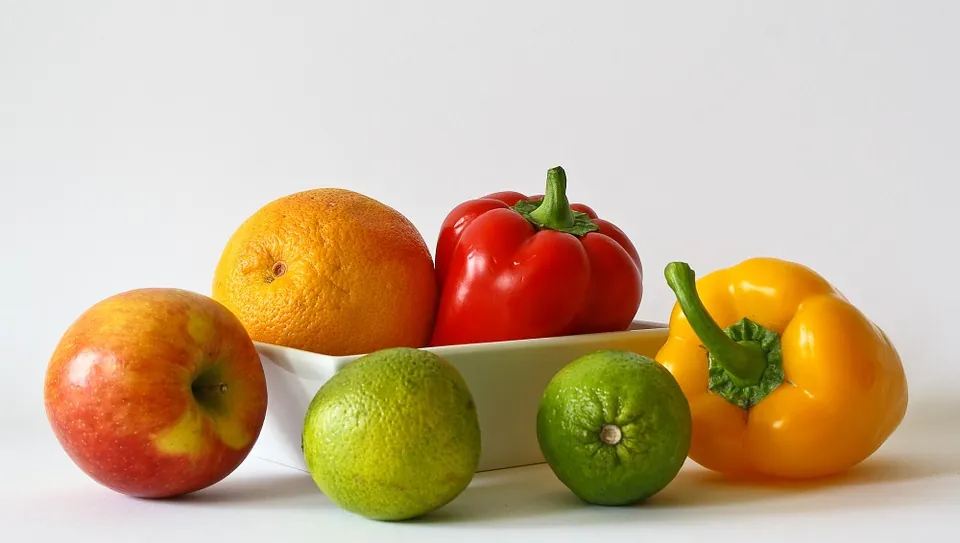
If you’re anything like me, meal planning isn’t something you like to do. I’m more of a cook- on-a-whim kind of person, making whatever I’m in the mood for that day. This can pose a bit of a problem sometimes, but a little bit of planning on the weekend can help keep you on track with healthy eating.
Pre-cut your veggies
After your weekend trip to your local farmer’s market or grocery store, bring home your bountiful veggie harvest, rinse and pre-cut the veggies to store for use through the week. Buying veggies and spending a little time getting them ready on the weekend will not only save you time in the kitchen during the week but also save you money. Pre-cut veggies can be expensive and you’re never sure how old they really are. Home-cut veggies can be stored in plastic zip bags, plastic or glass container and kept fresh through the week. Just place a dry paper towel in the bottom of the container to trap any extra moisture or gently pat dry if storing in a zip bag.
The USDA recommends eating at least 3 servings of vegetables a day as part of an overall healthy diet, and that eating more vegetables may also help reduce the amount of calories you eat in a meal. Vegetables are a good source of fiber, low in fat and calories, and an important source of many vitamins and minerals.
Having pre-cut veggies on hand makes it easy to throw some into a quick stir-fry, have as a quick healthy snack or toss with some olive oil to roast. Roasting vegetables brings out the sweetness in them by what is called dextrinization- browning of the starch that gives foods a sweet taste. Try tossing veggies with a little olive oil, some seasoning then roast on a lined baking sheet at 400F for about 10-15 minutes or until tender. Roasted veggies make a great addition to a salad or as a side dish.
Batch cook rice, quinoa or pasta
Cooking rice, quinoa or pasta can be time-consuming and after a long day who has wants to spend hours in the kitchen cooking? Batch cooking over the weekend will have you cooking up healthy 15-minute meals to impress your family just like those celebrity chefs Racheal Ray and Jamie Oliver.
Cook rice, quinoa or pasta over the weekend and store in containers for up to one week. If you find yourself not using all of the food you batch cooked, you can store them in the freezer for up to 6 months. Just defrost in the refrigerator the day before you plan to use them again.
- Rice and quinoa can be stored in a glass container right after cooking.
- Toss pasta with a little olive oil before storing in a container to prevent from sticking.
Rice and quinoa can be tossed into a simple stir-fry with some chopped veggies and pasta can be reheated in a little boiling water in only 1-2 minutes.
The USDA recommends eating 1 ½-2 cups of grains per day as part of a healthy diet. Eating whole grains like brown rice, whole wheat pasta or quinoa provides your body with many beneficial nutrients that are stripped away from refined wheat products. Whole grains are an excellent source of fiber, several B vitamins and minerals. B vitamins are an essential for energy, a healthy nervous system and play a role in metabolizing your food by helping your body release the energy from protein, fat, and carbohydrates in the foods you eat.
Precook Legumes
Legumes, like beans and chickpeas can take hours to cook. Presoaking the legume can help cut cooking time in half, and batch cooking on the weekend can eliminate the need to even turn on the stove.
Over the weekend, prepare the beans first by soaking overnight. The next day, begin cooking the beans you plan to use for the week. If you plan right, you can have a few things cooking at the same time. Just make sure to cool the legumes to room temperature before you store them, otherwise they may turn bad in a few days. If cooled properly and stored in an air-tight container, legumes will keep for up to one week in the refrigerator and up to 3 months in the freezer.
Legumes are a unique food because they can be counted as both a protein and a vegetable in your diet. Legumes are packed with nutrients and have many benefits to your health such as reducing your risk of heart disease, stroke, and certain cancers. Adding legumes to your diet is a great way to get in plant-based proteins that are loaded with fiber.
Frozen veggies
Freezing vegetables is one way to be sure to always have produce on hand when you’re short on time and are the next best thing to fresh. They’re usually picked at the peak and then quickly flash frozen, preserving most of the nutrients. Just like store-bought pre-cut veggies, frozen veggies can be a bit more expensive, so why not put a little time aside on a weekend to make your own.
Next time you’re buying veggies at the farmer’s market, buy a little extra of whatever is in season, and instead of storing the pre-cut veggies in the refrigerator, blanch some (that is dropping veggies into boiling water for 30 seconds- 1 minute). After blanching the veggies, remove them from boiling water and drop them into ice water to stop the cooking process. Pat dry, then spread on a baking sheet to freeze for at least 2 hours before storing in a plastic bag.
Arizona grows some of the best sweet corn in the country and you can find it in season at your local farmer’s market or grocery stores from June to October. But what about the rest of the year? Stocking up on AZ finest sweet corn when it’s in season and freezing it for those recipes you can’t live without in the winter is the best way to enjoy those tasty kernels year round. Just cut kernels off the cob raw, or either after grilling on the BBQ or blanching, then spread them on a lined baking sheet in the freezer for at least 2 hours before storing in a plastic bag.
Frozen corn can be added to many dishes; I’ve even added one of my favorites below or you can check out Fill Your Plate for more yummy Arizona sweet corn recipes.
Sweet corn is another one of those amazing foods that can be considered a vegetable, a grain and a fruit. Usually, corn is eaten as a vegetable and has many of the health benefits of vegetables. Sweet corn is a rich source of B vitamins, vitamin C, phosphorus, manganese, folate and dietary fiber. One serving of sweet corn contains 3 grams of your daily fiber needs.
Eating healthy is much easier when you have a well-stocked refrigerator. By taking an hour or two over the weekend to prepare, you too can be cooking healthy meals in as little as 15 minutes. Here’s one of my personal favorite go to recipes that take less than 15 minutes to prepare.
Black Bean and Quinoa Salad
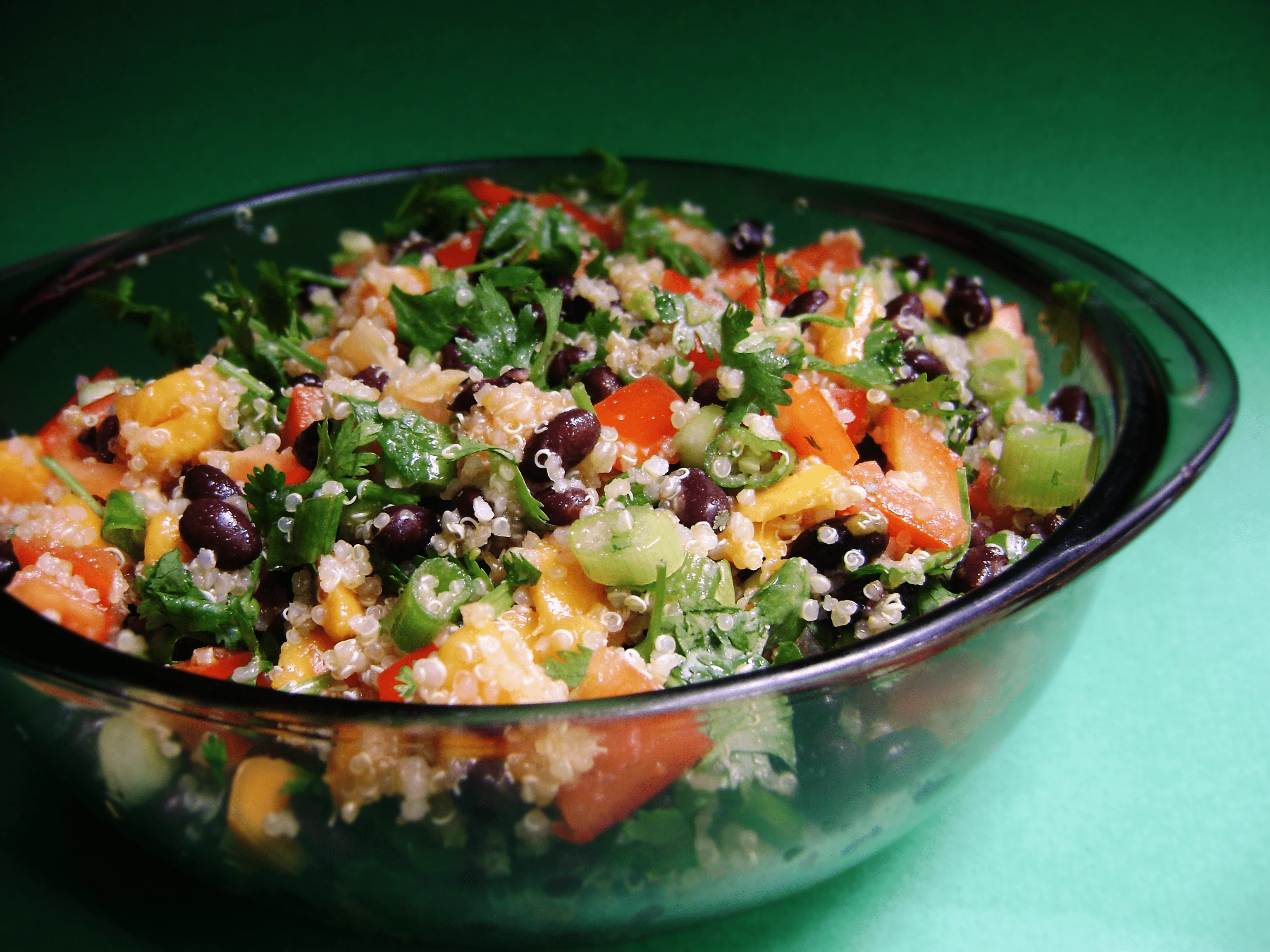
Ingredients
1 cup frozen corn (fresh is always better, but who has the time tonight!)
1 small red onion, diced
1-2 cloves garlic, chopped
1 red sweet pepper, diced
1 zucchini, chopped (optional)
1 can black beans, rinsed and drained
1 cup cooked quinoa (you can use rice if you prefer)
1 lime, juiced
Handful of cilantro, chopped
How to prepare
- Heat a skillet over medium-high heat and dry sauté (no oil) the corn with chili powder, cumin and coriander until it begins to brown, tossing to prevent sticking, about 2-4 mins.
- Add in the onion, garlic, and red pepper and sauté another 1-2 mins.
- Add the black beans and toss to heat. (Note- do not cook black beans, just toss them in the mixture and turn off heat.)
- Remove from heat and add the cooked quinoa (or rice), lime juice and coriander and mix until all ingredients are combined.
- Garnish with fresh avocado, tomato, cilantro and a lime wedge.
This can be served warm or cold. I served mine with organic blue corn chips and avocado. This salad also makes a great filling for other dishes you can find on my recipe blog, like my Taco Omelet or Black Bean Quinoa Stuffed Portabella’s.
Enjoy!
Remember to go to Fill Your Plate for recipes from Arizona Farmers and Ranchers.
References
USDA ChooseMyPlate.gov
Acne is Not Just About the Diet
By Bailey Roden, Arizona Farm Bureau Intern
You know that cliché movie where the teenage girl has a date coming up and a pimple appears right in the middle of her forehead. I fully relate to this and I know many of you can too. Of course, it’s not a problem any of us want to have but it happens! I remember my first experience with this problem like it was yesterday. I had the most important competition of my life. I thought that no one would be able to take me seriously with a ginormous swollen red dot on my face. The worst part of it all is that there was nothing I could do about it other than a little foundation. It still felt like a neon sign flashing red on my forehead.

So, I went on about my day, did my competition while still being completely self-conscious. To make matters even worse I was in so much pain due to this bump on my face. I didn’t think the day could get any worse. While I was in this situation I began to think of all the ways this can be prevented. I wash my face every day and I moisturize, but apparently that’s not enough.
Full of curiosity, I began to do some research because I needed to know how to avoid this situation. During my research I found out that teenagers are not the only ones suffering from acne, adults are too. Research has also shown that your diet plays a role in your face breakouts. A lot of Americans consume a “Western Diet.” This diet is loaded with red meat, saturated fats, carbohydrates and too much sugar. A key component missing from this diet is plant-based fibers. The western diet has forgotten the rule of moderation. As the consumer of this diet, it is our responsibility to incorporate moderation. There are foods we could add to this diet to help fight acne! For example, foods that are rich in antioxidants! You can also keep that beef on your plate, because foods that are rich in zinc help fight acne as well. So, next time you throw that mouthwatering steak on the grill, have a nice side salad to go with it! I would even throw some carrots on that plate for a brighter color!
The list includes more than just your diet when it comes to contributing factors of acne. Your genetics and hormones are also the enemy. Genetics may come as a shock to most people but in this day in age it’s pretty common. This is one of the most unpredictable factors. Similar to other diseases or issues dealing with genetics, it’s difficult to treat because the counter reaction is unknown. The other excuse you’ve heard for acne is hormones. Hormones are the sneak-attack acne. Hormones are happening internally and acne is an external blemish that appears due to all the crazed hormone activity that’s going on during puberty. Of course, there is one more pesky acne factor that we are all too familiar with; stress. Stress-related pimples can also be linked back to hormones. When you’re stressed, an oil-releasing hormone increases the amount of oil released therefore causing a clogged pore and a surprise visit from our unpopular friend, acne.
It seems like the world of acne is against us, that’s because it totally is. But we worked out today, so we’re ready to fight back! In the war against acne, remember to have a diet that includes a variety of red meat and plant-based fibers. If genetics is your issue, doctors specializing in dermatology can help you find a treatment that’s right for you, the same thing goes for hormones! As for stress, take a deep breath and relax.
For recipes to help you add variety to your plate check out Fill Your Plate, We have everything from main dishes, side dishes, and desserts!
Diabetes and Better Eating
By Bailey Roden, Arizona Farm Bureau Intern
Do you suffer from diabetes or know someone who does? According to the American Diabetes Association, in 2015 30.3 million Americans had diabetes, this number includes both diagnosed and undiagnosed cases. According to Medical News Today diabetes occurs when the body’s ability to produce or respond to the hormone insulin is impaired, resulting in abnormal metabolism of carbohydrates and elevated levels of glucose in the blood and urine.

With a number of different types of diabetes, the common two we hear about are type one and type two. Type one is more common in children and is an autoimmune disease; where the body mistakes its own cells as invaders. Type two is more common in adults and has a number of conditions that are linked to the cause. Many assume bad eating is the main cause of diabetes. While that can be true, it is not the only leading component.
Diabetes can occur genetically; some individuals are just simply born with this disease. Another contributing factor to diabetes is prediabetes. Prediabetes is a condition in which an individual’s blood sugar is high, but not high enough to be type 2 diabetes. However, prediabetes can lead to type two diabetes. In the prediabetes stage, your cells are becoming resistant to insulin and your pancreas is unable to create enough insulin to overcome this resistance. In addition to the examples mentioned, diabetes has another instance when it can occur in the human body: gestational diabetes.
Gestational diabetes occurs during pregnancy due to the hormones the placenta is producing to sustain the pregnancy, making your cells more resistant to insulin.
If diabetes is a worry for you since other family members have it or you’ve been diagnosed as prediabetic here are 13 ways you can prevent diabetes, provided by health line:
- Cut sugar and refined carbs from your diet
- Work out regularly
- Make water your primary drink
- If you are approaching obesity, losing weight will help decrease your chances of diabetes
- If you are a smoker, quit smoking
- Make a low-carb diet your new best friend
- Work smaller portion sizes into your daily eating habits
- Refrain from sedentary behaviors
- Enjoy a high-fiber diet
- Increase your vitamin D levels
- Enjoy processed foods in moderation
- Introduce coffee and tea as your secondary drink
- Look into natural herbs to add to your diet
As you can see there are a number of contributing factors to diabetes. A bad diet is not the only cause of diabetes but it can play a vital part. Along with many other components to a healthy, happy life, keep in mind a healthy diet. If you’re not sure how to bring healthy meals into your household, check out Fill Your Plate for some incredible recipes and source our blog to discover nutritional strategies for better eating.
Get More Leafy Greens in Your Diet
By Laura Slatalla, Recent ASU Nutrition Student
Green leafy vegetables are rich in folic acid, vitamin C and K, fiber, magnesium, and phytochemicals. They lower risk for cancer and cardiovascular disease. Those greens are also low calorie and low fat, so they’re excellent for weight management! But the average American diet doesn’t actually contain that many servings of leafy greens, so we need to bump up our daily servings!
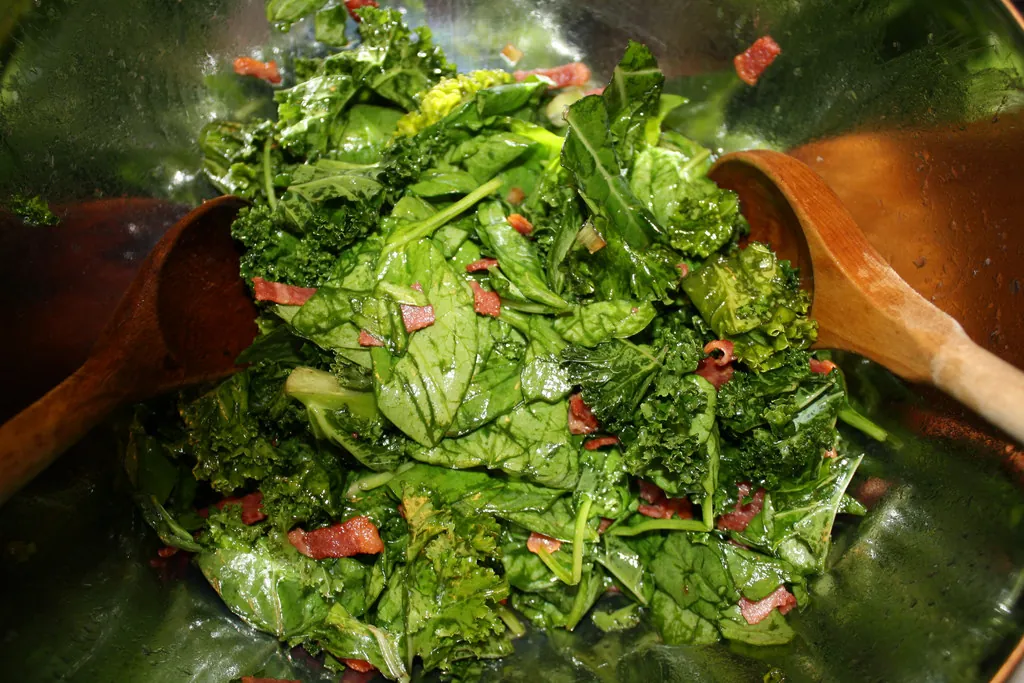
Here are some easy ways to add leafy greens to your diet, and remember- the darker the green the better!
- Load up sandwiches or wraps with spinach and lettuce. Your lunchtime favorites will taste fresher and be crisper.
- Add spinach to scrambled eggs and omelets in the morning.
- Make a salad for your main dish! Add other colorful veggies like bell peppers and carrots, grilled chicken, seeds, and even fruit like apples.
- Baked kale chips are crunchy dark green snacks!
- Add greens to your pasta dishes- layered with lasagna or tossed in ravioli.
- Lettuce wraps can replace tortillas when you’re eating tacos, or bread when eating sandwiches.
- Green smoothies! Any bitterness from vegetables in a smoothie can be countered with the sweetness from some fruit.
- Add more leafy greens to stir fry! Traditionally we just throw in some broccoli, but collard greens and spinach are tasty in stir fry too.
Go to fillyourplate.org to hunt for our vegetable recipes online. During the winter, Arizona’s Yuma valley produces 90% of beautiful leafy greens for the rest of America.
Soup: The next Greatest Diet or just Another Fad?
Lori Meszaros, Recent Arizona State University Nutrition Student
“Nutrient dense power meals wherever you go, feed, not starve your body, nourish your body… Incorporating delicious soups into your everyday diet is easy with Soupure.”
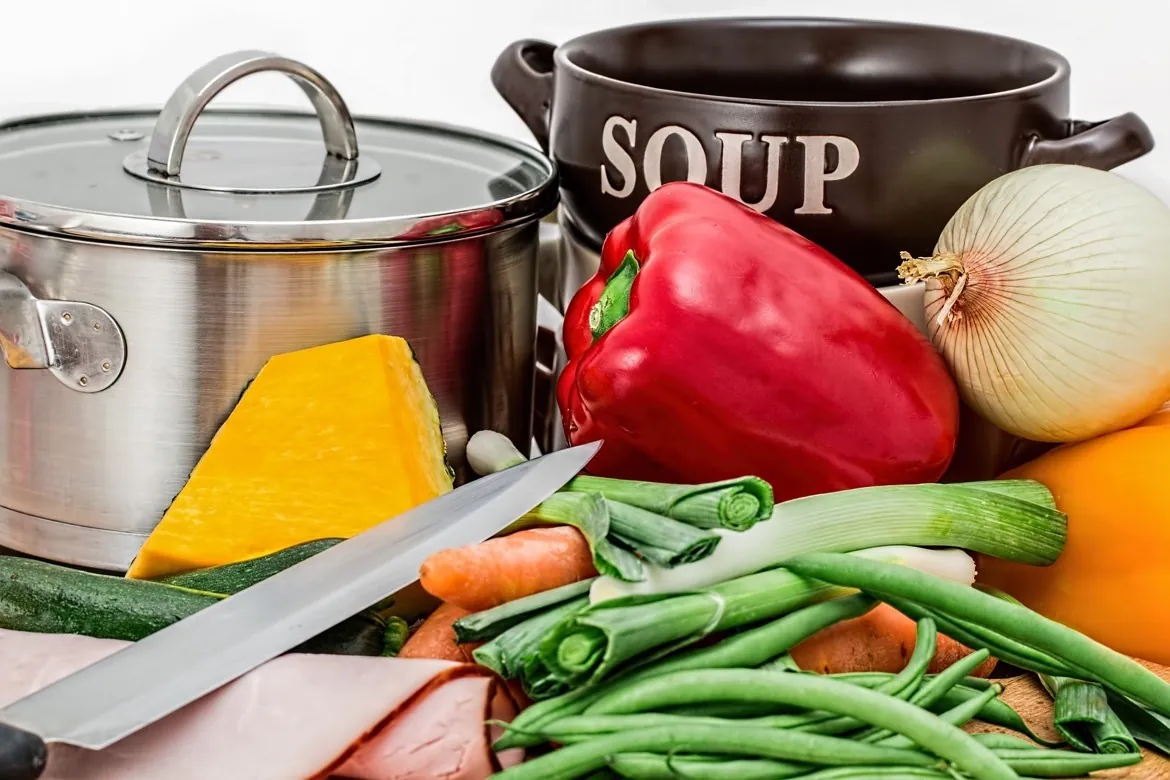
Breakfast, lunch and dinner soups available to your door? No, this isn’t some kind of new advertising gimmick, this is Soupure, a California based company promoting a healthy diet by consuming only soup. The next big diet fad, or is this just soup, something people have enjoyed for centuries and California is just catching on?
Souping diets, or a ‘cleanse’ as the company advertises, are becoming the next greatest diet fad since juicing; The only difference, you’re getting the fiber that is lost in juicing diets.
Smoothies seemed to fill that gap, but then everyone complained about how much sugar is in smoothies. So soup seems the next logical step in our diet-crazed minds.
Using soup to cleanse or heal the body isn’t anything new. Soup dates back to 4000 B.C and was widely used for its restorative or healing powers of the body. Even before the age of modern medicine, soup was used as a remedy and has continued to be used in Traditional Chinese Medicine (TCM). If you think about it, we turn to chicken soup when we are sick to ease our symptoms of the cold and flu. Soup has been used to heal and restore our bodies for centuries, so why are we now calling it the next best diet?
Recent research has supported that having soup before a meal will help a person feel satiated, (that means feel full) in turn, decreasing hunger, making you eat less. This is good right? Well, of course, it is if losing weight by eating less is your goal, but there’s only thing missing- a variety of food, and in some cases chewing!
If your goal is to lose weight, then enjoying soup before a meal is a great way to help you feel full, and may reduce the amount of food you eat during the meal. Soup will also increase the nutritional density of your meal, which is great for your body. But before you get caught up in the hype of this latest diet fad, which can end up costing you hundreds of dollars, ask yourself this one question…
Can you see yourself eating only soup for your meal every day, for the rest of your life?
If the answer is no, then skip this latest diet fad, save your money and just enjoy soup.
Now that the weather is cooling down, homemade soups are a great addition to your weekly menu. (Check out Fill Your Plate for great soup recipes.) I always make extra so I have enough to take for lunch or have as an afternoon snack to keep me fueled while chauffeuring my kids to all of their after-school activities.
My kids love Butternut Squash, and we enjoy having Butternut squash soup for dinner once in a while. Now that so many of the ingredients are in season at your local farmer’s markets, Fall makes it the perfect time to try this one at home too.

Butternut Squash Soup
Serves 6-8 adults
Ingredients
1 brown onion, diced
2-3 cloves of garlic, chopped
2” piece (1tbsp) ginger, peeled and diced
1-2 small chilies (optional)
2-3 cups butternut squash, cubed
2 carrots, chopped
1 sweet potato, chopped
3 tbsp homemade veggie stock concentrate*
1 tsp ground cinnamon
1 tsp ground cardamom
1 tbsp ground coriander
1 can coconut milk
Method
- In a large saucepan add onion, garlic, ginger, and chilies if using, and sauté over medium-high heat for about 3 minutes, or until they become aromatic
- Add the butternut squash, carrots and sweet potato to saucepan, then add veggie stock concentrate, spices, and enough water to just cover the chopped veggies*
- Bring to a boil then reduce heat to simmer for 30 minutes
- After 30 minutes, turn off heat to blend soup using a soup blender or food processor*
- Add coconut milk to blended soup and simmer for another 15-20 minutes
- Serve with your favorite bread- I like Turkish or crusty bread with this one
Enjoy!
Notes
- Vegetable stock can be substituted for veggie stock concentrate and water- just use enough vegetable stock to cover the chopped veggies
- Vegetable bouillon cubes equivalents, 2 cubes = 3 tbsp veggie stock concentrate
- If using a food processor, the soup may need to cool slightly before adding to processor. If soup is too hot, it may over heat the processors motor.
References
Ke, LJ., et al. Revealing the secret of soups’ healing power: Nanostructures and their functions. J Food Drug Anal, 2012; 20: 275-279.
Clegg, ME., Ranawana, V., Shafat, A., & Henry,CJ. Soups increase satiety through delayed gastric emptying yet increased glycaemic response. Eur J Clin Nutr, 2013; 67: 8-11.
Tips to Keep You on Track with Healthy Eating
By Lori Meszaros, ASU Nutrition Communications Student
We’ve all been there, wanting to cook a healthy meal but home too late to even think about it. Who wants to spend hours in the kitchen preparing, cooking and then cleaning up after a long day? We often turn to unhealthy takeout or prepared meals at the local grocery store. These meals are loaded with extra calories, fat, and salt which makes it hard to stay on track and stick to eating healthy. However, if you follow these simple tips, you too can cook a healthy meal in less time than it takes to steam rice or boil pasta.
If you’re anything like me, meal planning isn’t something you like to do. I’m more of a cook on a whim kind of person, making whatever I’m in the mood for that day. This can pose a bit of a problem sometimes, but a little bit of planning on the weekend can help keep you on track with healthy eating.
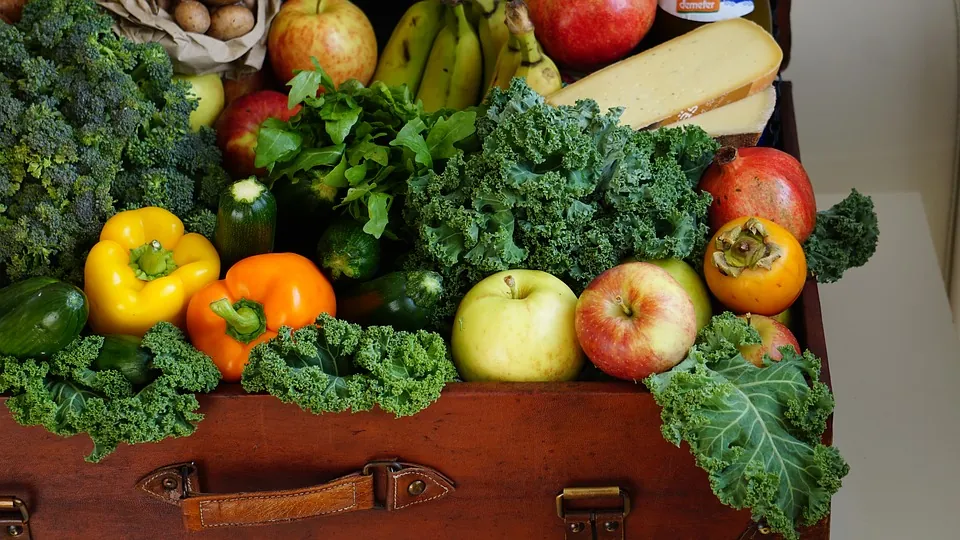
Pre-cut your veggies
After your weekend trip to your local farmer’s market, bring home your bountiful veggie harvest, rinse and pre-cut the veggies to store for use through the week. Buying veggies and spending a little time getting them ready on the weekend will not only save you time in the kitchen during the week but also save you money. Store bought pre-cut veggies can be expensive and your never sure how old they really are. Home cut veggies can be stored in plastic zip bags, plastic or glass container and will keep fresh through the week. Just place a dry paper towel in the bottom of the container to trap any extra moisture or gently pat dry if storing in a zip bag.
The USDA recommends eating at least 3 servings of vegetables a day as part of an overall healthy diet, and that eating more vegetables may also help reduce the number of calories you eat in a meal. Vegetables are a good source of fiber, low in fat and calories, and an important source of many vitamins and minerals.
Having pre-cut veggies on hand makes it easy to throw some into a quick stir-fry, have as a quick healthy snack or toss with some olive oil to roast. Roasting vegetables brings out the sweetness in them by what is called dextrinization- browning of the starch that gives foods a sweet taste. Try tossing veggies with a little olive oil, some seasoning then roast on a lined baking sheet at 400F for about 10-15 minutes or until tender. Roasted veggies make a great addition to a salad or as a side dish.
Batch cook rice, quinoa or pasta
Cooking rice, quinoa or pasta can be time-consuming and after a long day who has wants to spend hours in the kitchen cooking? Batch cooking over the weekend will have you cooking up healthy 15-minute meals to impress your family just like those celebrity chefs Racheal Ray and Jamie Oliver.
Cook rice, quinoa or pasta over the weekend and store in containers for up to one week. If you find yourself not using all of the food you batch cooked, you can store them in the freezer for up to 6 months. Just defrost in the refrigerator the day before you plan to use them again.
- Rice and quinoa can be stored in a glass container right after cooking.
- Toss pasta with a little olive oil before storing in a container to prevent from sticking.
Rice and quinoa can be tossed into a simple stir-fry with some chopped veggies and pasta can be reheated in a little boiling water in only 1-2 minutes.
The USDA recommends eating 1 ½-2 cups of grains per day as part of a healthy diet. Eating whole grains like brown rice, whole wheat pasta or quinoa provides your body with many beneficial nutrients that are stripped away from refined wheat products. Whole grains are an excellent source of fiber, several B vitamins, and minerals. B vitamins are an essential for energy, a healthy nervous system and play a role in metabolizing your food by helping your body release the energy from protein, fat, and carbohydrates in the foods you eat.
Precook Legumes
Legumes, like beans and chickpeas, can take hours to cook. Presoaking the legume can help cut cooking time in half, and batch cooking on the weekend can eliminate the need to even turn on the stove.
Over the weekend, prepare the beans first by soaking overnight. The next day, begin cooking the beans you plan to use for the week. If you plan right, you can have a few things cooking at the same time. Just make sure to cool the legumes to room temperature before you store them, otherwise, they may turn bad in a few days. If cooled properly and stored in an airtight container, legumes will keep for up to one week in the refrigerator and up to 3 months in the freezer.
Legumes are a unique food because they can be counted as both a protein and a vegetable in your diet. Legumes are packed with nutrients and have many benefits to your health such as reducing your risk of heart disease, stroke, and certain cancers.
Frozen veggies
Freezing vegetables is one way to be sure to always have produce on hand when you’re short on time and are the next best thing to fresh. They’re usually picked at the peak and then quickly flash frozen, preserving most of the nutrients. Just like store-bought pre-cut veggies, frozen veggies can be a bit more expensive, so why not put a little time aside on a weekend to make your own.
Next time you’re buying veggies at the farmer’s market, buy a little extra of whatever is in season, and instead of storing the pre-cut veggies in the refrigerator, blanch some (that is dropping veggies into boiling water for 30 seconds- 1 minute). After blanching the veggies, remove them from boiling water and drop them into ice water to stop the cooking process. Pat dry, then spread on a baking sheet to freeze for at least 2 hours before storing in a plastic bag.
Arizona grows some of the best sweet corn in the country and you can find it in season at your local farmer’s market from June to October. But what about the rest of the year? Stocking up on AZ finest sweet corn when it’s in season and freezing it for those recipes you can’t live without in the winter is the best way to enjoy those tasty kernels year round. Just cut kernels off the cob raw, or either after grilling on the BBQ or blanching, then spread them on a lined baking sheet in the freezer for at least 2 hours before storing in a plastic bag.
Frozen corn can be added to many dishes; I’ve even added one of my favorites below or you can check out Fill Your Plate for more yummy AZ sweet corn recipes.
Sweet corn is another one of those amazing foods that can be considered a vegetable, a grain, and a fruit. Usually, corn is eaten as a vegetable and has many of the health benefits of vegetables. Sweet corn is a rich source of B vitamins, vitamin C, phosphorus, manganese, folate and dietary fiber. One serving of sweet corn contains 3 grams of your daily fiber needs.
Eating healthy is much easier when you have a well-stocked refrigerator. By taking an hour or two over the weekend to prepare, you too can be cooking healthy meals in as little as 15 minutes. Here’s one of my personal favorite go-to recipes that takes less than 15 minutes to prepare.
Black Bean and Quinoa Salad
Ingredients
1 cup frozen corn (fresh is always better, but who has the time tonight!)
1 small red onion, diced
1-2 cloves garlic, chopped
1 red sweet pepper, diced
1 zucchini, chopped (optional)
1 can black beans, rinsed and drained
1 cup cooked quinoa (you can use rice if you prefer)
1 lime, juiced
a handful of cilantro, chopped
How to prepare
- Heat a skillet over medium-high heat and dry sauté (no oil) the corn with chili powder, cumin and coriander until it begins to brown, tossing to prevent sticking, about 2-4 mins.
- Add the onion, garlic, and red pepper and sauté another 1-2 mins.
- Add the black beans and toss to heat. (note- do not cook black beans, just toss them in the mixture and turn off heat.)
- Remove from heat and add the cooked quinoa (or rice), lime juice and coriander and mix until all ingredients are combined.
- Garnish with fresh avocado, tomato, cilantro and a lime wedge.
This can be served warm or cold. I served mine with organic blue corn chips and avocado. This salad also makes a great filling for other dishes you can find on my recipe blog, like my Taco Omelet or Black Bean Quinoa Stuffed Portabellas.
Enjoy!
References
USDA ChooseMyPlate.gov
Is Your Whole Grain Bread Lying To You?
By Alise Robers, Recent Arizona State University Student
When grocery shopping there are so many different options and brands to choose from. It can sometimes be overwhelming! If you want to pick out a loaf of bread that is 100 percent whole grain, you have to be wary of the many breads that are pretending to be healthier for you. Breads that claim to be “wheat breads” are often enriched with over 50 percent white flour with molasses or caramel added to make them look like whole wheat.1 To avoid the headache, here are some hints for finding true whole grain bread, rolls, and crackers.
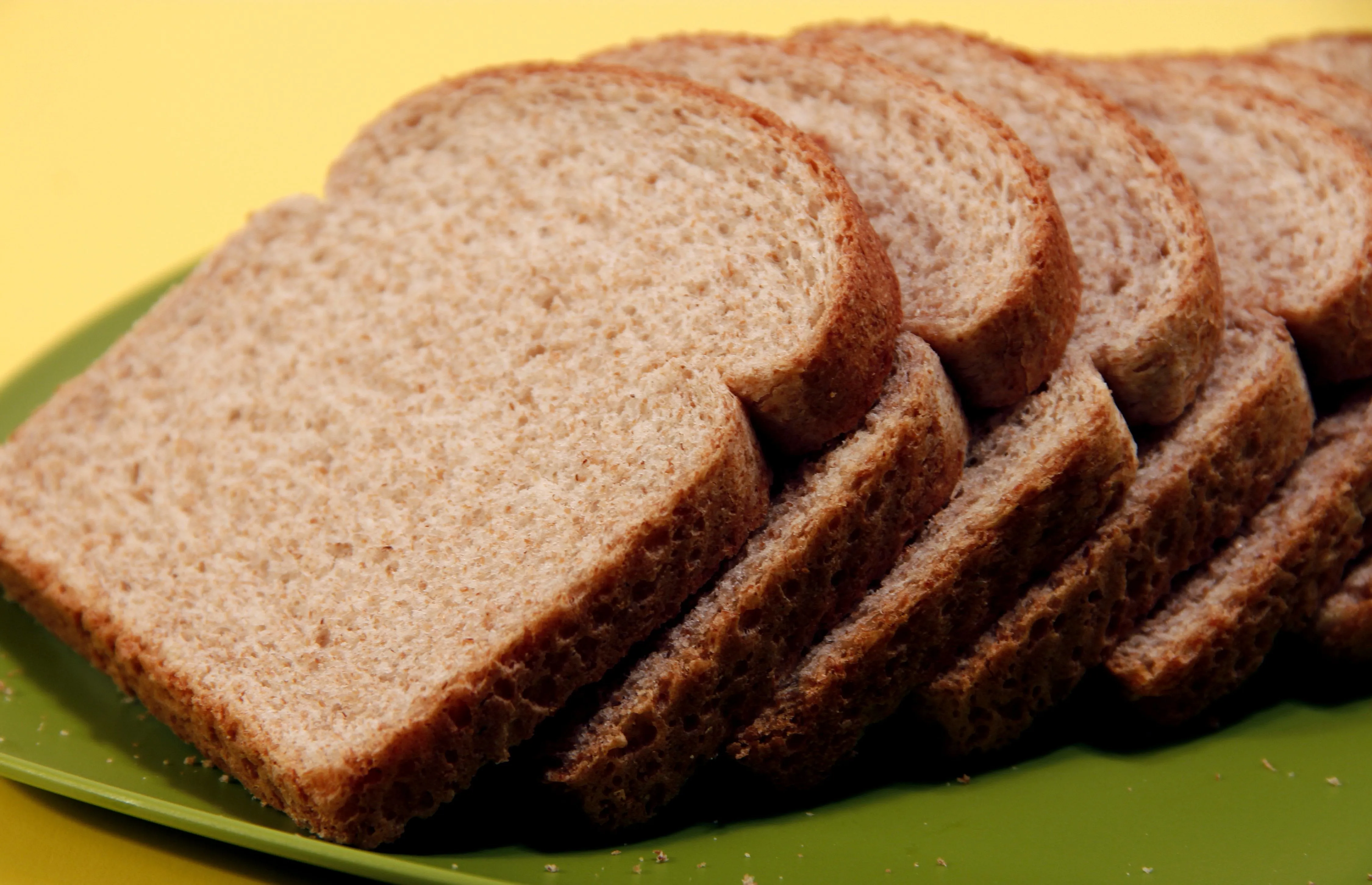
Hint #1: To ensure the bread you are buying is in fact whole grain, it’s important that you first read the ingredient list on the food label. It’s helpful to know that the ingredient that weighs the most will be listed first and the ingredient that weighs the least will be listed last.1 For example, if the whole grain is listed first, then you know that ingredient makes up the majority of that product. Look for whole wheat, whole oats, whole rye, whole grain corn, whole grain barley, or brown rice as the first ingredient. Stay away from breads that list wheat flour, de-germinated cornmeal, or enriched flour as their first ingredient because these are not good sources of whole grain.1,2
Hint #2: The Dietary Guidelines for Americans recommends you make half or more of the grains you eat whole grains.3 This means 3 to 5 servings of whole grains every day. When picking out your loaf of bread look for the packages that have the Whole Grains Council stamp, which will show you how many grams of whole grain are in one serving of the product.2 One serving of whole grains is 16 grams, and your goal should be to eat about 48 grams per day!
Hint #3: Keep an eye out for the whole grain health claim on food product labels: “Diets rich in whole-grain foods and other plant foods and low in saturated fat and cholesterol may help reduce the risk of heart disease.”1,2 This claim ensures that the product contains at least 51 percent or more whole grains by weight and is low in fat.
Hint #4: Pay attention to the amount of fiber listed per serving on the nutrition label. If the product contains a substantial amount of whole grain ingredients it should have a minimum of 2 grams of fiber per serving.1 Keep in mind that it is very possible for a product to have a large amount of fiber but no whole grain ingredients. Food manufacturers will add functional fibers to certain foods and depending on these in order to meet your daily fiber needs is not as healthy as eating a diet rich in whole grains.1
Eating a diet that is nutritionally balances is one of the best ways to keep yourself fit and healthy. Whole grains are a big part of that, so don’t forget to get your daily serving! For more information about whole grains, visit Fill Your Plate!
References:
- Drummond, Karen Eich, and Lisa M. Brefere. Nutrition for Foodservice and Culinary Professionals. 8th Hoboken, NJ: John Wiley & Sons, Inc., 2010. 55, 92-93. Print.
- “U.S. Dietary Guidelines and WG.” U.S. Dietary Guidelines and WG | The Whole Grains Council. N.p., n.d. Web. 2017. http://wholegrainscouncil.org/whol-grains-101/how-much-enough/us-dietary-guidelines-and-wg.
- “Chapter 1 key Elements of Healthy Eating Patterns.” A Closer Look Inside Healthy Eating Pattersm-2015-2020 Dietary Guidelines. N.p., n.d. Web. 2017. http://health.gov/dietaryguidelines/2015.guidelines/chapter-1/a-closer-look-inside-healthy-eating-patterns/.
Ripe vs Unripe
By Laura Slatalla, ASU Nutrition Student
As fruit ripens, the nutritional composition of it changes too. Enzymes in the fruit start to break down the starch into simpler sugars, so the glycemic index starts to rise. Riper fruits will give you a greater spike in blood sugar. They’re also lower in fiber, and there’s a loss in some vitamin and mineral content, but that can be slowed down by letting them ripen in the fridge.
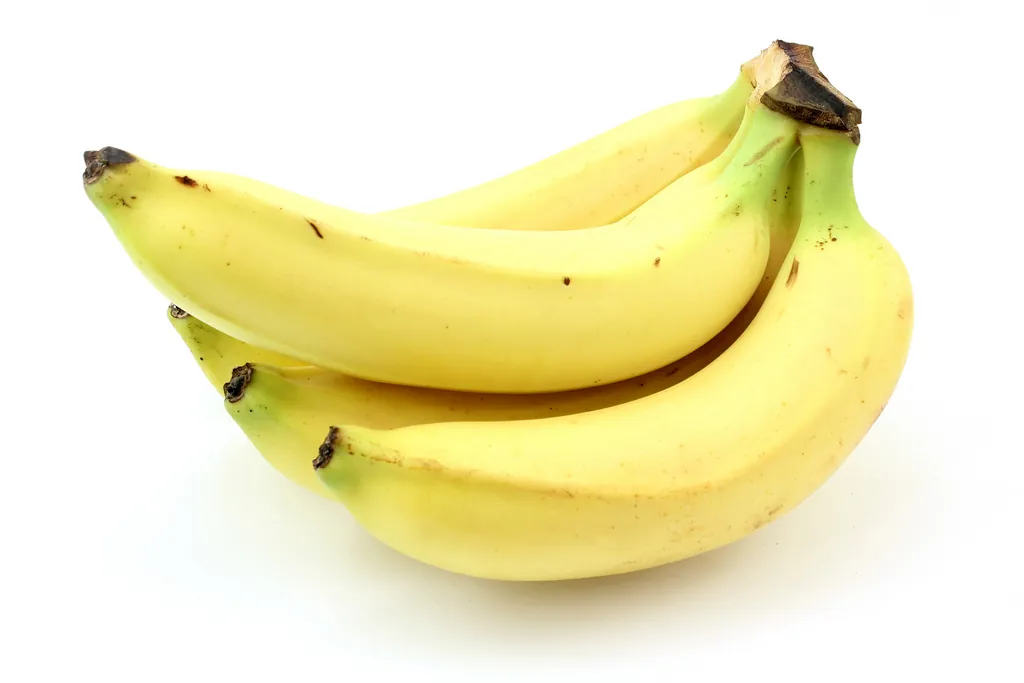
Not all the side effects of ripening are negative though. Antioxidants are a byproduct of ripening fruit! That’s right- the more bruised your banana is, the more antioxidants it contains.
So ask yourself, what do you want out of your fruit? Sweeter fruit with cancer-fighting properties, or fruit with more fiber and less simple sugar? It’s a personal choice.
Here’s how to check the ripeness of fruit. Smell it. Ripe fruit will have a sweet fruity scent compared to unripe fruit. It should be soft, but not mushy. Although, even if fruit is a little mushier you can freeze it for smoothies later. The color should be a little darker.
When picking a melon keep in mind they don’t continue to ripen off the vine because they don’t contain ethylene like apples or bananas. Ripe melons should feel heavier, sound hollow, and smell sweet- but not too sweet.
Eat fruit the way you like it. Snack on it and top your breakfast with it! Either way, you’re getting micronutrients and antioxidants!
The Japanese Pumpkin
By Kat Brown, Recent Arizona State University Nutrition Student
With fall creeping up around the corner, and hopefully double digit temperatures, it’s about to be the season of the pumpkin! Watch out because a new squash is in town. It is called kabocha and is often referred to as the Japanese pumpkin. This versatile veggie normally has a dark green skin but some varieties can also have an orange pumpkin-like skin and are a perfect medium size, usually ranging from 3 to 5 pounds. Slicing into this Asian squash you will see an orangey yellow color that makes for that perfect fall color palette when cooking.

Since they are normally available late summer to fall, if you plan on stocking up make sure that you store them in a cool dry spot. Over time the kabocha will sweeten and can be used to make wonderful holiday desserts. Kabocha is packed with benefits from the skin to the seeds. The squash itself is cfull of beta-carotene and iron, while the skin is loaded with fiber.
Beta-carotene
This antioxidant converts to vitamin A in the body and helps support a healthy immune system and good vision. Since vitamin A is a fat soluble vitamin it is important to monitor intake and not exceed the UL of 3,000 ug/day. When consuming b-carotene, the body only converts what it needs to vitamin A, making it a safe source of vitamin A to consume. B-carotene is also what provides the red-orange pigment in plants and fruits.
Iron
The recommended dietary allowance (RDA) for iron is 8mg/day for men and 18mg/day for women ages 19-50 years old. This mineral is used to make hemoglobin that allows your red blood cells to carry oxygen throughout the body. Iron deficiency can result in anemia and while it is not common in the United States when present it can have serious health consequences.
Fiber
Fiber is a crucial part of a healthy diet and consists of insoluble and soluble fiber. The skin of most winter squash consists mostly of insoluble fiber which means it does not dissolve in water. Studies show that people with higher fiber intakes have a reduced risk of heart disease, colon cancer, and gastrointestinal disorders. This is partially due to insoluble fibers ability to bind and remove carcinogens from the intestines.
Just like pumpkins, you can roast your kabocha seeds. The seeds provide omega 3 fatty acids which can provide many health benefits.
Here is my favorite seed recipe:
Ingredients:
3 cups kabocha squash seeds, cleaned and dried
1 Tbsp coconut oil
2 Tbsp sugar
1 tsp cinnamon
1 tsp chili powder
1 tsp sea salt
Method:
Preheat oven to 180
Toss seeds with oil.
Combine sugar (if using) and spices and toss with seeds, coating evenly.
On parchment-lined cookie sheets, place seeds in a single layer.
Roast 20-30 minutes, stirring occasionally and checking for doneness.
The good news: kabocha does great in drier climates! Many types of squash are available year round in Arizona, so no matter what, you can always find delicious and local squash near you! Visit Fill Your Plate to do just that, and find local growers of squash and other fruits and veggies!
On The Go Snacking
By Laura Slatalla, Recent Arizona State University Nutrition Student
Are you lacking in quick and easy snack ideas? Healthy snacks like yogurt and hummus aren’t easy to eat while on the run, but having something handy while doing errands or going to class will keep you from stopping at a vending machine or fast-food joint! Take a look at these convenient snack ideas for when you’re on the go!
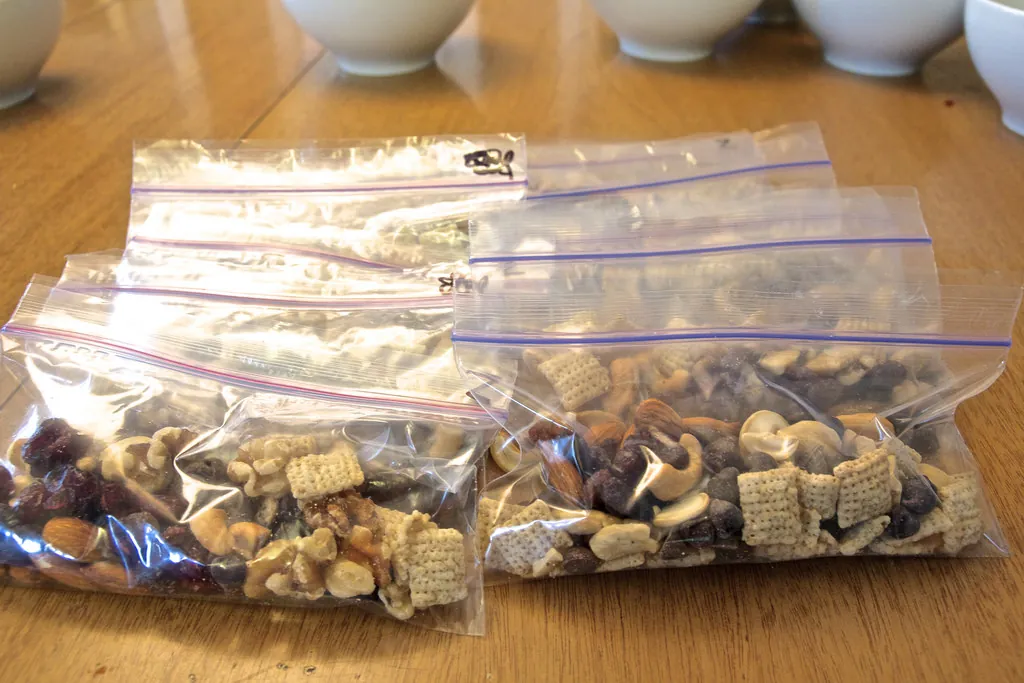
Trail Mix
Design your own trail mix tailored to your likes! Start with some nuts like peanuts or almonds. Add seeds, dried fruit or berries, or some pretzels or crackers. The mix can be personalized and have the perfect ratio for you specifically! Portion it out into bags or reusable plastic containers and keep it in your purse, backpack, car, or fanny pack.
Kale Chips
Craving something crunchy? Kale chips will satisfy without all the fat and calories that come along with your average potato chip. They are oven baked with a little olive oil, salt, and pepper to taste.
Stuffed Pita
Pitas can be stuffed with veggies like spinach and bell peppers, meats like turkey or chicken, and even cheese! They require a little prep, but once they’re made and stored in the fridge, you can just grab one before you leave. They’re filling and won’t be messy if you need to eat them in the car. Everything stays contained in the pita.
Whole Fruit
I avoid fruits that need to be peeled or cut- like oranges or kiwis, but apples, pears, and grapes are all tasty options! Hardier fruit won’t bruise as easily in a bag, but harder containers can be used for berries and softer fruits.
Roasted Chickpeas
These beans make a crunchy snack that’s high in fiber! They’re rinsed, tossed in olive oil, seasoned, and baked at 450 degrees for a half hour.
Sliced Vegetables
Raw vegetables can be eaten as finger foods. Go with carrots, sliced bell peppers, or celery. Snacking is an awesome way to up your vegetable intake.
It’s not hard to find healthy and easy-to-eat snacks for when you’re on the go! There are lots of option that will easily fit in your lunch box, backpack, purse, or bag. Share your favorite snacks with us in the comments!

